
The story is long, but the explanation is simple: They're legal once you take out the ephedrine alkaloids and replace them with something even better...
It's [year], and something interesting's happening at several reputable online nutrition stores: an ephedra-based fat burner named Lipodrene remains high on the lists of best-sellers -- over a decade after ephedra was apparently banned by the FDA.
What's going on here? How is ephedra still out there after so many sites say that it's been banned? And why are these products so popular?
Is someone breaking the law, or is there another side to the ephedra story?
We decided to investigate, but when searching around, all you find are old articles saying that "ephedra is illegal". It turns out that those articles are all a bit wrong - so today on PricePlow we're going to explain what's really going on here.
TL;DR
The short story is that ephedra is still legal to be sold as a supplement, but ephedrine alkaloids are not.
So Hi-Tech Pharmaceuticals is removing the banned alkaloids from the ma huang plant, then legally selling it in fat burner supplements.
The following questions remain:
- Is ephedra without the ephedrine effective? (see what's left in ephedra)
- What ingredients replace the ephedrine, and do they work as well? (see ephedrine's replacements)
- Is ephedra safe now? (quick answer is yes - we have testimony of no serious adverse events)
- What is the best ephedra fat burner then? (see the best ephedra pills section, which is a brief buyer's guide)
The background
The Ephedra Sinica plant, also known as Ma Huang (pronounced ma-wong), has long been used in traditional Chinese medicine, dating back some 2,000 years,[1,2] and possibly used 3500 years ago in India.[3]
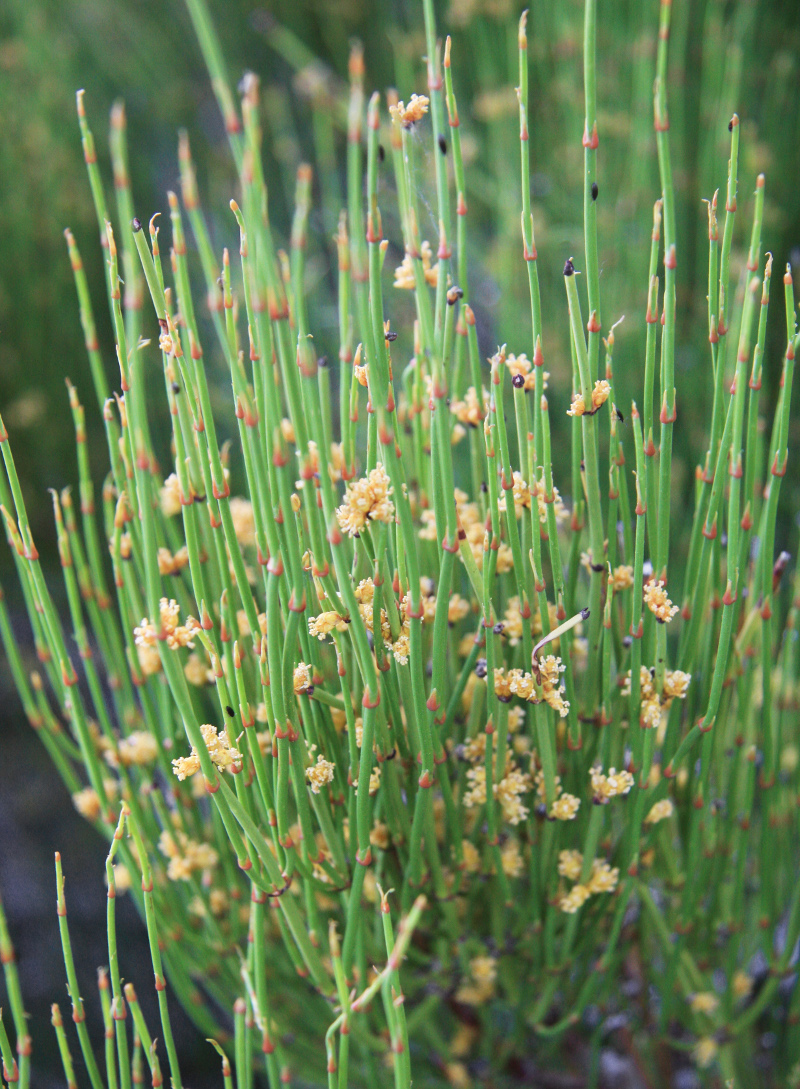
Ephedra, also known as ma huang, is a downright fascinating plant. And safe... when extracted and used properly.
There are four highly-potent alkaloids in ephedra:
- ephedrine
- pseudoephedrine
- norephedrine, and
- methylephedrine
...the most famous being ephedrine, which has potent fat-burning effects.
The issue is that like it or not, ephedrine has been banned from use in supplements since 2004[4,5] (a law upheld in 2006[6]), so this paper is going to focus on what's left in ephedra without the ephedrine alkaloids.
If you want the entire story from start to finish, you can click here to read the history of ephedrine and what led to its banning, then come back.
The short story is that the compound is actually relatively safe when used appropriately, but was vilified and the FDA decided it was an "unreasonable risk" due to the unfortunate one-two punch of egregious consumer misuse and disgraceful manufacturing practices by a few companies.
That argument here nor there though -- we can't have ephedrine in supplements and that's that -- so let's move on to where ephedra supplements lie today.
Is ephedra legal? The current state of Ephedra in [year]
We use the term "dietary supplements containing ephedrine alkaloids" in this final rule to refer to dietary supplements containing botanical sources of ephedrine alkaloids. We use the term "ephedra" to refer to botanical sources of ephedrine alkaloids, whether derived from a member of the Ephedra genus or another botanical...[4]
-- FDA Final Ruling on Ephedrine Alkaloids [emphasis ours]
However, the truth of what's actually banned is a bit lower in the document:
This final rule declares dietary supplements containing ephedrine alkaloids to be adulterated under section 402(f)(1)(A) of the act.[4]
So, if you take the banned alkaloids (specifically ephedrine, pseudoephedrine, norephedrine, methylephedrine, norpseudoephedrine, and methylpseudoephedrine) out of the ma huang herb, you can still legally use it in supplements.
But what's left, how do we replace the benefits of the ephedrine, and is it now safe?
So what's in ephedra after the banned ephedrine alkaloids are taken out?
While the banned alkaloids were the major players for weight loss, they weren't the only players. It turns out that this is a fascinating herb that's full of interesting, beneficial compounds. You'll see is that ephedra contains a smattering of healthy components.
Also, realize that ephedrine alkaloids are really only 0.5% to 2.5% of the plant[7-12] - there's tons of other incredible stuff inside, even without them.
The best way to quickly describe it would be "an advanced form of green tea extract", but that might be selling it short.
Here's some of the most important stuff remaining that we are interested in using:
-
(-)Epicatechin, Polyphenols, and Catechins;[14-17]
Right off the bat, this is a fantastic sign. We may not have known as much about it back in the 90s and 2000s, but there is now extensive research being conducted on epicatechin. It's commonly found in dark chocolate, and the scientific community is beginning to recognize it as the primary beneficial component in cocoa flavonols and the reason high-yield dark chocolate is so healthy. Turns out, epicatechin is in ephedra too.
We go into the details in our paper titled Epicatechin - The Dark Force Behind Dark Chocolate, but in terms of weight loss, cholesterol, and blood sugar management, general health benefits can be seen with as little as 50mg of epicatechin.[18]
As discussed in that guide, we typically enjoy ~45g of 70% dark chocolate per day, but that comes at a pretty bad hit of 200 calories to your diet. This is why supplements containing epicatechin and other such flavonols are becoming quite popular... and higher amounts of quality ephedra extract can now be added to that list.
What about the catechins?
Green tea isn't the only plant with potent catechins! Shown are EC (our interest here), EGC, ECG, and the well-known EGCG
You may also recognize the word "catechin" -- these are the primary fat oxidizing components found in green tea. They're also found in ephedra.
There's quite a bit of research on the various catechins, and while EGCG (epigallocatechin gallate) is the most popular one, weight loss is improved when you boost overall catechin intake - be it via tea, diet, or supplementally.[19-22]
Their efficacy isn't disputed much - it's really up to the dosage. Ephedra is typically taken in 25mg servings at a time, which won't be huge in terms of catechin intake, so later on this article discusses some products that have even higher doses.
Right off the bat, though, we start to see that the herb contains several incredibly beneficial components. The important part is reliably extracting them, and backing it up with third-party tests. More on that soon.
-
Flavonoid glycosides
A glycocide is a molecule that uses glycosidic acid to bind sugar with something else. When they're bound to flavonoids, or plant metabolites, you end up with flavonoid glycosides. This kind of binding allows for better absorption and uptake in humans, and they're often used in medicines and drugs.[23]
The specific flavonoid glycosides inside of ephedra are currently unclear, although herbacetin is one such molecule identified, as well as the potent antioxidant quercetin (often used in fat burners and other supplements) and its glycoside relatives.[24]
Chemical Porn. Glycosidic acid allows for some useful bindings that create even more useful biological compounds.
-
Kreb Cycle Intermediates: Malic Acid and Citric Acid
A man named Hans Krebs first elucidated how cells convert food into energy via the citric acid cycle in 1937. He also proposed the specific metabolic pathway showing how cells oxidize carbs/fats/proteins for energy. The process takes place in the mitochondria (our cellular 'power plants'), and is now known also as the Krebs Cycle.
In short, the cycle removes high-energy electrons from carbon, and citric acid is an incredibly important intermediate required for completion (which explains its name).
The monumentally important citric acid cycle. Bad things happen when you don't have the tools to complete this series of reactions. Image courtesy Wikimedia
Although there is no direct evidence of its supplementation on weight loss, when the body is deficient of citric acid or the Krebs cycle is otherwise inhibited, the body shifts into less-efficient modes of energy production, which could inhibit fat loss and metabolism.[25]
The same goes for malic acid: this is a catalyst in the Krebs cycle which is used to increase energy production when burning pyruvic acid.
A deficiency of malic acid is linked to chronic fatigue.[25] You'll need more than what's in ephedra (such as from a supplement containing citrulline malate - where the malate is from malic acid), but it's yet another beneficial molecule inside the herb.
-
Glycans (ephedrans) - Blood sugar normalizers
Glycans are a class of chemical compounds typically made of monosaccharides (the most simple and basic units of carbohydrates). They function as protective / stabilizing barriers in biological processes, and make way for cell-to-cell interactions, and even interaction between carbohydrates.[26]
The glycans found in ephedra are known as ephdrans, and five such ephedrans (labeled A-E) have been identified. These ephdrans have been shown in mice studies to have long-lasting hyopglycemnic effects.[27]
They "significantly reduced blood glucose levels in normal and alloxaninduced diabetic mice."[28]
We're not sure how they fare in humans, or what doses are ideal, but these are some interesting components you don't normally run into in other weight loss supplements - blood sugar is a major issue dieters must deal with.
-
Tannins, Hydrolyzed Tannins, and Condensed Tannins: gallic or epigallic acids
The word tannin is probably most familiar from its use by wine connoisseurs. They're what actually makes wine taste dry -- scientifically, they bind to proteins and other amino acids.
The studies that identified the epicatechin and catechin above[16,17] also identify and discuss their creation of tannins. Specifically, gallic acid[29] and epigallic acid.
Gallic acid is an "antimutagenic, anticarcinogenic and anti-inflammatory agent".[30]
Different types of ephedra have different phenolic content. The Alata sub-species consistently fares quite, well, for instance.[29]
A study published in 2015 shows that gallic acid regulates body weight and glucose homeostasis through AMP-activated protein kinase (AMPK) activation.[31] When given to mice, they did not gain weight despite increased food intake, and significantly improved glucose and insulin homeostasis.
Other research shows that gallic acid, as well as its esters (discussed below), have an effect that inhibits enzymes that metabolize drugs - potentially allowing the drugs (or supplement ingredients) to last longer.[32]
You may recognize the word "gallic" from some of the other constituents above. For instance, the popular EGCG (epigallocatechin gallate) compound from green tea is a galloylated ester. So is epicatechin gallate. Point being, this is an important compound that enhances several biological processes, and helps make for some of our favorite natural ingredients.
-
Phenolic Proanthocyanidins, Procyanidins, and acids: Stimulation without ephedrine
These are an extension of the above section. Although these names may sound daunting, proanthocyanidins are the polyphenols in red wine that are being researched due to the theory that they lower the risk of coronary heart disease and overall mortality.[33]
At least twelve different molecules have been discovered in this class.[34,35] Once again, these additional constituents (ephedrannin D1, ephedrannin Tr1, ephedrannin Te1) are related to the epigallocatechin discussed above.[35]
So what do they do above and beyond what we've already seen? It's the stimulation.
Low-ephedrine Mormon Tea still stimulates? Here's why
There are several species of ephedra that do not contain significant amounts of ephedrine. The plants from from North America are a good example.
However, the teas from North American ephedra, known as Mormon Tea, were still quite stimulatory in nature - even when the ephedrine is missing! What gives?
It is suggested that the proanthocyanidins are a major reason for this, as several of these compounds ignite neuroactivity.[36,37]
Basically, it seems that ephedra is even more diverse than green tea when it comes to the various catechin content, allowing for several kinds of organic interactions that produce desirable effects - even without ephedrine.
-
-
Volatile oils (L-a-Terpineol, Limonene, and Linalool)
When analyzing the essential oils from ephedra stems, you get all kinds of different compounds. One study found as many as 127,[38] of note are L-alpha-Terpineol, Limonene, and Linalool.
In general, several of these volatile oils have an influence on the central nervous system. This is shown from a Japanese study where pepper oil induced a 1.7x increase in plasma adrenaline.[39]
Both pepper and ephedra share terpineol and limonene,[40] and may be partially responsible for those adrenaline-boosting effects. L-alpha-terpineol is a pleasant smelling alcohol that has potential as an anticancer agent.[41]
Linalool, however, is partially responsible for the relaxing effects of lavender, so it may be used to slightly temper the adrenaline increase that the ephedra oils produce.[42-44]
The key points here:
- Ephedra is a fascinating plant that has a great deal of beneficial components. It's no surprise that it's been used and practically worshipped for longer than human civilization has even existed.[13]
-
Even without ephedrine alkaloids, ephedra still has some stimulatory actions, thanks to some of the nitrogen-containing metabolites discussed above.
- In our opinion, the power players in the ephedrine-free ephedra extracts are epicatechin, the proanthocyanidins, and the ephedrans.
- Since there's so much diversity in the herb, it's really going to come down to how it's extracted.
We believe that careless extraction processes used by some suppliers in the 1990s was one of the major reasons for past problems.
When all's said and done, this is clearly not an herb you want to trust to amateurs, and history has proven that. That leads us to our next section - the one FDA-approved ephedra extract.
Thermo-Z from Hi-Tech Pharmaceuticals: Lab-Tested, FDA-Certified Ephedra
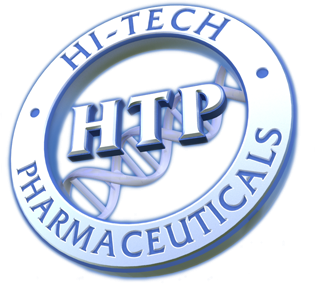
If you're into high-energy fat burners, it's time to take another look at Hi-Tech Pharma. Read about Thermo-Z, Thermo-RX, and see the lab tests below.
Hi-Tech Pharmaceuticals is the company that produces the best-selling Lipodrene formula, amongst a host of other ephedra-based supplements.
Over the years, they've refined their standard ma huang extract, naming it Thermo-Z, which is the only brand of ephedra extract tested by the Food and Drug Administration (FDA) and Drug Enforcement Agency (DEA). It's not subject to any federal or state ban on ephedrine alkaloids since it's been thoroughly shown not to contain any.
This section will focus on Thermo-Z, since it's the primary type of ephedra available and the only one we trust per the lab reports shared below.
Hi-Tech is generously allowing us to disclose the specs behind this extract:
Thermo-Z is standardized to over 50% flavonoid glycosides, epicatechin and tannins; 10% glycans (ephedrans); 10% citric malic and oxalic acids; 5% proanthocyanidins (condensed tannins); and 5% volatile oils (L-a-Terpineol, Limonene, and Linalool).
-- Jared Wheat, Hi-Tech Pharmaceuticals President and CEO
This is why our research above focused on these components - after all, they're what you're going to find in the ephedra supplements currently on the market.
Additionally, since Thermo-Z uses Chinese ephedra, Thermo-Z has also been approved by the Chinese government exclusively for Hi-Tech - no one else can use this extract.
Consistency in the standardization
We asked Hi-Tech if they could back their standardization up with some lab reports. We know reports are out there, since Hi-Tech Pharma has been repeatedly audited by the FDA and seemingly never fails a compliance test.
They responded with some examples from third-party tests, which you can download HERE[46] and HERE.[47] Third party tests are great because they lack any bias and are performed in trusted external labs.
For instance, in the lab test, we can see the following breakdown:
- Tannins: 63.73%
- Polyphenols: 51.32%
- Catechins: 13.15%
- Citric Acid: 5.21%
- Malic Acid: 1.78%
There is some (but not total) overlap between the polyphenols and tannins.
It's no secret that Hi-Tech Pharma and the FDA have had their differences - such as when they fought to keep ephedrine on the market in the first place. Regardless of your take on the FDA, we consider it a good thing that they are consistently auditing Hi-Tech's facilities. With an herb as powerful and variable as ephedra, we'd rather err on the side of caution and get something as safely standardized as possible.
So, until we see more information, this is literally the only ephedra we'll even consider touching.
For an interesting bit of history on Thermo-Z's launch, see the image below:

"This was DEA returning Lipodrene to us in 2007 when we switched formulas, as they seized it saying ephedra was illegal. We said 'no ephedrine *alkaloids* are illegal, and made them return it to us so we could take photos" -- Jared Wheat, Hi-Tech Pharma
That is a picture of the DEA returning Lipodrene to Hi-Tech in 2007 after the new ephedrine-free formula launch. The DEA had seized the products, stating that ephedra was now banned. Hi-Tech successfully argued that there were no ephedrine alkaloids inside, getting them to return the product. They've been safely selling it ever since!
Thermo-Z Dosing in Hi-Tech's Ephedra Fat Burners
Most of Hi-Tech's ephedra fat burners (like Lipodrene) contain 25mg Thermo-Z per serving.
The two high-dose outliers are in Hellfire EPH 150 (150mg Thermo-Z ephedra per capsule!) and Black Mamba HyperRush, which has 65mg Thermo-Z ephedra inside. Both of these products are made by Innovative Labs, a company owned and run by Hi-Tech Pharma as of mid-2015.
With that said, one tablet of Lipodrene is still our standard "go-to" recommendation for anyone wanting to test these waters, although a day's worth of three Hellfire EPH 150 capsules will get you far more ephedra if you want to step it up later on.
We discuss this later on in the best ephedra pills section, if you want to skip to that now.
But is this good enough? Early 2000s Lipodrene users have high expectations
The results with acacia rigidula were better than a solid dose of ephedrine by 20%, and better than a small dose of ephedrine by 82%! (see results below)
Now that ephedrine is gone from these ephedra supplements, is this really enough for weight loss, even at the 25mg doses taken one to four times per day (or possibly up to the 150mg taken 3x/day)?
Unfortunately, we don't have any research on weight loss subjects taking this ephedra alone. And to be honest, we're not sure users care about just one ingredient, so long as they get results from the entirety of the products containing it.
So how do the new ephedra supplements still provide so much kick, and do they work?
This is the most important part:
How the new ephedra fat burners in [year] really work
Thermo-Z has long since proven to be legal, but without ephedrine, you're still missing out on some serious feel-good fat-burning stimulation.
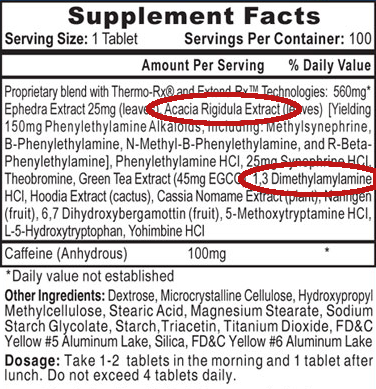
The Lipodrene ingredients, with the two main ephedrine replacements circled. We discuss these ingredients below
Can it all be replaced?
The answer is yes - and it comes primarily from two things:
- PEA alkaloids from the acacia rigidula plant, to induce the thermogenic and lipolytic potential from ephedrine; and
- DMHA, to bring back the feel-good, high-focused, and [anecdotally reported] appetite suppressive properties.
Not all of Hi-Tech's contain both of these, but those that do, such as Lipodrene, are by far the most popular products.
While this paper is on ephedra, it's worth digging into these two ingredients, since most readers are really wondering about the overall ephedra pills currently on the market.
-
Acacia Rigidula Extract: The ephedrine alkaloid replacement
Acacia Rigidula is another fascinating plant, and you'll see it on nearly every ephedra fat burner label. This is where the fat-burning molecules that are structurally similar to ephedrine were added back to the formula, and Hi-Tech even contends that they work better than ephedrine!
In Lipodrene, for instance, the acacia leaves were extracted to yield 150mg of phenylethylamine alkaloids such as methylsynephrine, B-Phenylethylamine, N-Methyl-B-Phenylethylamine, and R-Beta-R-Phenethylamine). This is what's known as their Thermo-Rx brand Acacia Rigidula Extract.
Rather than get too heavy into these specific compounds, let's look at Hi-Tech's research on this Thermo-Rx vs. ephedrine:
Thermo-Rx vs Ephedrine: Comparative Research
First, start with ephedrine as our "baseline", since it's what we need to match or exceed.
Research has shown that 10mg ephedrine increased energy expenditure by 6.6% over a three hour period,[48] while another study showed 30mg of ephedrine increased energy expenditure approximately 10%.[49]
These are resting numbers. Simply taking ephedrine and sitting there will help you burn more calories. Nobody really argues this... at least not anyone who's studied or used the stuff.
So Hi-Tech decided to have these studies replicated under the care of Dr. Patrick Jacobs, but using the following:[51-53]
- Caffeine
- 250mg Acacia Rigidula
- A combination of ingredients in Hi-Tech Fastin (an acacia-based fat burner)
- Placebo
The part of the study we're interested in is the 250mg acacia rigidula dose - on its own without caffeine - just like the ephedrine studies above.
And the results were 12% increased energy expenditure over three hours![51]
It could actually be better over the next couple of hours, since the energy numbers were still elevated after the three hour cut off.[51]
The results with acacia rigidula were better than a solid dose of ephedrine by 20%, and better than a small dose of ephedrine by 82%!
On its own, 250mg Acacia Rigidula outperforms 30mg ephedrine in VO2 testing.[51]
Is that a realistic dose of acacia?
Just to make sure this wasn't a loaded study, you can easily get this 250mg dose in a single day - for instance, two Lipodrenes contain a total of 300mg Thermo-rx acacia rigidula while totaling 200mg caffeine. And don't let those caffeine numbers fool you - two Lipodrenes is a serious dose to take at once, and we stick to one tablet at a time.
A study used in federal court
It has been decided: Hi-Tech Pharma's use of the words fat burner and thermogenic are legal, because these products do indeed burn fat via thermogenesis![54] Image courtesy Wikimedia
We'd also like to note that this study was used as testimony in a successful case where the Federal Trade Commission (FTC) argued with Hi-Tech Pharmaceuticals over the definition of the words "fat burner" and "thermogenic". Hi-Tech won that case,[54] and this study was a major scientific component of it.
No researcher would put his good name on the line and in a Federal court unless the study was extremely well-conducted. This research has been put through the ringer with expert testimony and witnesses coming from all sides, so we trust it despite Hi-Tech having funded it.
On the individual Thermo-RX components
For the sake of brevity, we're not going to get into the specifics behind the components inside of Thermo-Rx - but again, they are methylsynephrine, B-Phenylethylamine, N-Methyl-B-Phenylethylamine, and R-Beta-R-Phenethylamine. Those could all be discussed in another article specifically on acacia.
The point is, they're similar molecules to ephedrine, and when combined properly, can have similar if not better results. But also remember, these PEA alkaloids are hard and fast-hitting, and should not be taken lightly. Start at minimum doses and only under the watchful eye of your doctor.
But something's still missing...
Ephedrine had another use, though. It's a great appetite suppressant,[55] and many of its past users also claimed that it increased mood and cognitive focus. The PEA alkaloids from acacia are good at that, but still, something 'more' is needed.
That's where DMHA comes into most of these "new ephedra supplements":
-
DMHA
If you're a regular on this site, you'll know that we're big fans of these types of compounds when used responsibly and as disclosed on the label.
Users (including ourselves) often claim a euphoric mood burst, and increased focus with DMHA, especially when combined with caffeine. This helps make up for what was lost from ephedrine.
Most, but not all ephedra supplements contain this ingredient. Our best ephedra pills guide on this page discusses some that have it as well as a few that don't.
Athletic users should note that it's banned by nearly every athletic drug-testing organization due to its fantastic performance-enhancement properties, so if you're a drug-tested athlete, you definitely need to stay away from the ones that have it.
Just like ephedrine-based ephedra fat burners were serious supplements, so are these new ones. They should only be used under the care of a physician, and after being given a clean bill of health. For instance, if you have blood pressure problems, you simply shouldn't take high doses of stimulants without doctor's consent.
But if you are cleared to take them, they feel nothing short of incredible.
The conclusion on these ephedrine replacements
It bears repeating one more time: these are strong stimulants! Most of these products are not for the timid, nor are they for the stim-sensitive.
Just because ephedra is no longer doing the 'heavy lifting' in terms of stimulation, doesn't mean that the Thermo-Z ephedra fat burners aren't strong. Keep that in mind.
There's an old saying that goes "Sell them what they want, but give them what they need". In this case, users are searching for ephedra, yet looking for that old kick used back in the late 90s / early 2000s.
This ingredient combination is a different approach, but with the same result - if not better. And in our opinions, certainly safer. So next we need to talk about safety:
The new ephedra side effects and safety
First, we're extremely confident that the 'new ephedra' in Thermo-Z is safe, simply because there's not many stimulatory parts inside anymore. The catechins and acids left inside have long been proven safe, even at high doses.[56-59] That safety research has even continued into 2015 on a safety study performed on epicatechin.[60]
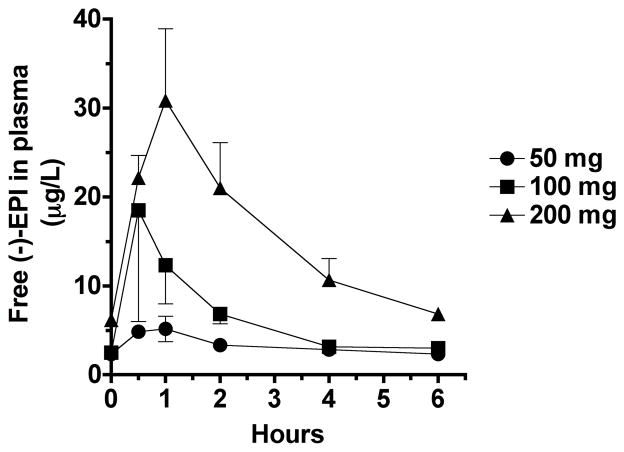
A recent safety analysis showed that epicatechin (a constituent of ephedra) is safe,[58] as are the other catechins, but what about these overall fat burners?
Asking if "ephedra is safe" is no longer really the issue though - we're not touching raw ephedra here. We're taking Thermo-Z based fat burners with additional stimulants alongside it.
So more importantly, the question is, "are these fat burners safe?", since they're ultimately what you're considering taking.
The best response comes directly from the horse's mouth in testimony filed to the government, where Hi-Tech Pharmaceuticals wrote a letter to the FDA regarding one of the ingredients in the Thermo-RX, β-Methylphenethylamine. They stated the following:
We have searched Hi-Tech's records and have not located a single report of death or serious illness or injury from any of these [BMPEA-containing] products.
-- Hi-Tech Pharmaceuticals, in published response letter to FDA[61]
The important thing to note here is that all of Hi-Tech's current ephedra products contain those acacia alkaloids, so basically, they are testifying that they don't have a single serious illness, injury, or death from this new wave of products, and they've been on the market since 2007!
This isn't to say that you should get careless, however. We've repeatedly tried to stress that the acacia + caffeine + DMHA mix is strong, and many of the products containing them are for advanced users only - users who have a doctor's approval and a clean bill of health.
For instance, if you know that you can't handle even a big cup of coffee, you probably don't want to be using Lipodrene. Good news for you is that there are some low-stim options discussed next.
You need to be reasonable and respect your own tolerance here - nobody needs to be a hero when it comes to stimulants.
So what if you have a lower stimulant tolerance? Where do you get started? That's where the next section comes into play.
What are the best ephedra pills for me?
Anytime someone asks "what's the best supplement?", be it for protein or fat burners, the answer is always, "it depends".
This is also the case for those looking for the best ephedra pills too. There is no "best" - there is only a best for YOU.
So let's go over a few choices - choose what suits you best:
-
When in doubt? Lipodrene.
If you're someone who's used fat burners in the past, you know you can handle a decent dose of caffeine, and you're looking for something more, then the original Lipodrene is the standard go-to.
It contains 25mg Thermo-Z ephedra extract, 150mg Thermo-Rx senegalia berlandieri extract, as well as 100mg caffeine in every tablet. One tablet is a great well-rounded start, and we typically don't need more than two in a day.
Don't let the small caffeine number fool you. Clearly the other components are going to make up for that, yet avoid caffeine-based jitters.
Hi-Tech Pharmaceuticals Lipodrene – Deals and Price Drop Alerts
Get Price Alerts
No spam, no scams.
Disclosure: PricePlow relies on pricing from stores with which we have a business relationship. We work hard to keep pricing current, but you may find a better offer.
Posts are sponsored in part by the retailers and/or brands listed on this page.
So why is Lipodrene so popular?
Because it's a fantastic formulation, and it goes beyond the stimulants listed above. There are additional ingredients that help suppress appetite, normalize glucose levels, boost the thyroid, and elevate the mood. Lipodrene literally has it all, and all of the reviews reflect that!
Remember, two tablets of Lipodrene at once is serious business and not recommended for rookies. Don't let that 100mg caffeine dose fool you!
-
The absolute strongest ephedra-based product?
This section is for hardcore stimulant users only. If Lipodrene somehow does nothing for you, and you really want to feel it, then what's next?
The answer is Lipodrene Hardcore or Stimerex Hardcore.
One tablet of Lipodrene Hardcore contains 200mg caffeine, 200mg senegalia blend, 1.5mg yohimbine, additional EGCG, and more. If you need more than two or three tablets in a day of this, it might seriously be time for you to take a stimulant-break and flush your tolerance, because this is intense!!
Hi-Tech Pharmaceuticals Lipodrene Hardcore – Deals and Price Drop Alerts
Get Price Alerts
No spam, no scams.
Disclosure: PricePlow relies on pricing from stores with which we have a business relationship. We work hard to keep pricing current, but you may find a better offer.
Posts are sponsored in part by the retailers and/or brands listed on this page.
Stimerex Hardcore, on the other hand, will be a bit lower of a caffeine dose, at 150mg per tablet, but seemingly will have far more acacia rigidula in its formula as it's led by a 475mg blend.
Hi-Tech Pharmaceuticals Stimerex Hardcore – Deals and Price Drop Alerts
Get Price Alerts
No spam, no scams.
Disclosure: PricePlow relies on pricing from stores with which we have a business relationship. We work hard to keep pricing current, but you may find a better offer.
Posts are sponsored in part by the retailers and/or brands listed on this page.
So caffeine-lovers can go with Lipodrene Hardcore, and PEA/Acacia-lovers can go with Stimerex Hardcore.
-
The most ephedra in one capsule?
HellFire EPH 150 will get you, by far, the most Thermo-Z in a day. But make sure you get the Thermo-Z based version, new in 2015!
If you want to test if Thermo-Z itself is really effective, the best way is to go after the products that have the most per serving.
In that case, Hi-Tech's subsidiary, Innovative Labs, is where it's at:
-
Hellfire EPH 150
Living up to its name, this product has 150mg Thermo-Z per capsule, alongside 150mg caffeine and the Thermo-Rx acacia blend. This means you can get a max daily dose of 450mg ephedra spread across the day, but you'll probably need to work up to the three capsule dose.
Innovative Labs HellFire EPH 150 – Deals and Price Drop Alerts
Get Price Alerts
No spam, no scams.
Disclosure: PricePlow relies on pricing from stores with which we have a business relationship. We work hard to keep pricing current, but you may find a better offer.
Posts are sponsored in part by the retailers and/or brands listed on this page.
-
Black Mamba HyperRush
This new re-formulation contains 65mg Thermo-Z per capsule, but that's alongside 200mg. So your max daily dose will be 130mg ephedra with this one.
Innovative Labs Black Mamba Hyper Rush – Deals and Price Drop Alerts
Get Price Alerts
No spam, no scams.
Disclosure: PricePlow relies on pricing from stores with which we have a business relationship. We work hard to keep pricing current, but you may find a better offer.
Posts are sponsored in part by the retailers and/or brands listed on this page.
Note that you're going to be looking for the updated Innovative Labs products with Thermo-Z on the label. This is from after Hi-Tech bought Innovative Labs. Prior to that, they used Ephedran extract, which we don't know as much about. Upon takeover, Hi-Tech's scientists decided to keep the doses the same but switched to Thermo-Z.
It's likely that a full day's dose of HellFire EPH 150 is going to have some legitimate dosing of epicatechin alone. This one is worth a look... if you can handle the stimulants alongside the Thermo-Z.
-
Hopefully that helps. Feel free to add any comments to the bottom of this post and we'll assist and consider updating the guide up above as new products come out.
Conclusion
We wrote this document because there is way too much outdated information on these fat burners. Ephedra is an absolutely incredible plant, but it needs to be treated with absolute respect.
After seeing the lab tests, research, and government testimonies given, our opinions on ephedra fat burners has definitely changed, and we'll be updating our site's content to reflect that.
Thermo-Z is not an extract to be feared. The biggest question is which product to use, and hopefully the guide above helps with that.
Ephedra – Deals and Price Drop Alerts
Get Price Alerts
No spam, no scams.
Disclosure: PricePlow relies on pricing from stores with which we have a business relationship. We work hard to keep pricing current, but you may find a better offer.
Posts are sponsored in part by the retailers and/or brands listed on this page.
But we're not done yet. If you'd like to read about how and why we ultimately got here, then keep reading. It's time to talk about why ephedrine got banned in the first place, and what the lessons to be learned are:
The history of ephedrine and ephedra supplements
Pure ephedrine was first isolated by Dr. Nagai Nagayoshi in 1885, and rediscovered by Dr.s K.K Chen and Carl F Schmidt in the early 1920s.[62,63]
During the mid-1900s, it became a popular and effective treatment for asthma.[62]
Modern research on the use of ephedrine started in 1977, in which it had a slight stimulating effect on exercise and concluded that it may assist in the learning of simple psychomotor tasks.[64] Unfortunately, that study did not measure fat loss or caloric expenditure, and it would take another five years for that "discovery" to be made.
In 1982, researchers found that ephedrine stimulates thermogenesis and fat burning in brown fat cells,[65] and further research and trials throughout the 80s verified these claims.[66-73]
It works by stimulating beta-adrenergic receptors, which then get your body to release fatty acids for energy use. This translates to actual fat loss, not just weight loss, and it's backed up by the studies cited above (and more).
The ECA Breakthrough
Ephedra and ephedrine's big break came in 1989 and 1990, when the "ECA stack" - a combination of ephedrine, caffeine, and aspirin - was found to significantly promote weight loss in obese individuals,[74,75] as the three compounds are highly synergistic.[76]
This promising research coincided with the establishment of the dietary supplement industry, as well as the seedlings of the Internet, spurring what we can now consider the first "viral" media campaign in the industry. During this time several ECA Supplements were available for sale in various nutrition stores, mail order magazines, and online-to-mail-order systems.
It worked so well that there's an old bodybuilding adage that goes, "If you can't lose weight with ephedrine, then give up."
Several products contained more than just ephedrine though - they were general ephedra extracts, since ephedra contains several beneficial alkaloids beyond ephedrine (as discussed up above in this article).
However, a lack of standardization and quality control was clearly a major issue, which we'll discuss soon.
1994: A pioneering time

The 1994 Dietary Supplement Health and Education Act (DSHEA) is still the law of the land. Regardless of how you feel about it it, enforcement of Good Manufacturing Practices, however, seems to be the larger issue to this day.
This timeframe coincided with the formal creation of the supplement laws as we currently know them: the 1994 Dietary Supplement Health and Education Act (DSHEA),[77] as well as the creation of the Office of Dietary Supplements (ODS) by the United States National Institutes of Health (NIH) in 1995.[78]
Just prior to that, the United States Public Health Service established the Office of Alternative Medicine within the National Institutes of Health (NIH).[79]
The point being, the whole situation was all very new to all sides, and a lot of the rules, regulations, and regulatory bureaus were in a state of flux.
1996: Adverse events reported
Throughout these early times of the new supplement era, regulatory authorities noted an increased number of adverse events, one Texas-based report notably calling out the ephedrine-based alkaloids.[80]
1997: First attempt at banning
The FDA first proposed new regulations on ephedra in 1997,[81,82] arguing that humans should only consume 24mg within a 24-hour period, while any recommendation of more than 8mg within six hours would constitute adulteration. However, the outcry from lawmakers, industry groups, and the general public stopped this, with claims that the FDA didn't have the evidence to support restrictions.
In 1999, the General Accounting Office of Congress agreed with the outcry against these proposed restrictions, determining that the FDA didn't have strong-enough evidence to put these restrictions on ephedra.[83]
2002: Additional ammunition for the FDA
A paper published in early 2002 analyzed 926 adverse reports received by the FDA from 1995 to 1997, showing that 4% of the adverse reports involved serious cardiovascular events.[84]
Another review of 140 reports between June 1, 1997 and March 31, 1999, concluding that 31% of the reports were "definitely" or "probably" related to ephedrine-containing ephedra products.[85]
In order to compare ephedra against other herbal supplements, a team at UCSF analyzed data and found that ephedrine-based ephedra supplements represented 64% of adverse event reports, although they only accounted for 1% of total herbal sales.[86]
CANTOX: 0.0081 adverse events per million servings sold

CANTOX is now known as Intertek Scientific & Regulatory Consultancy Services
At this time, it's important to remember the sheer volume of ephedrine and ephedrine-based ephedra sales. According to a major report by CANTOX on ephedrine's safety, it's calculated that 3,086,041,072 servings of the stimulant were sold in the year 1999.[87] Yes, that is 3 billion servings.
Meanwhile, they state that the aggregate number of reported "serious adverse events" in 1999 was 25. This means that the number of reported events per million servings sold is 0.0081.
So there was still a relatively small percentage of users actually having issues. Nevertheless, serious adverse events are still just that -- serious -- and garner media attention.
RAND (funded mainly by the government) deals the final blow
The biggest dagger to ephedrine-based supplements came from the RAND Corporation, which put together the most comprehensive review to date. Published in 2003, they concluded that ephedrine-based ephedra products are associated with "psychiatric, autonomic, or gastrointestinal symptoms, and heart palpitations".[88-90]
It's important to note who primarily funds RAND Corporation (can you guess who?)[91]
2004: The Ephedrine Alkaloid Ban
The FDA used that report as a major weapon, and was then able to get the alkaloids banned from supplementation.[4]
The banning was further argued, and briefly overturned in District Court of Utah.[92] However, on August 17th, 2006, the U.S. Court of Appeals for the Tenth Circuit in Denver upheld the FDA's final rule, capping the entire saga off once and for all.[6]
Looking deeply into the reports....
Let's get back to that CANTOX report, because it's an absolute gold mine of information on ephedrine.
When the industry was fighting with the FDA regarding the ephedrine supplement ban, the adverse events filed came under question. CANTOX, an extremely well-respected regulatory consulting lab, performed a massive report on ephedrine, in search of a "safe daily dose" for everyone to agree upon.[87]
They covered everything from animal studies to human studies to the adverse event reports, which included known deaths.
The report can be downloaded HERE, but it's extremely long, so we'll summarize it below, since CANTOX discovered some incredibly important information:
-
The adverse events filed were horribly spotty and of poor quality.
For instance, here's what they have to say about the quality about the AERs (adverse event reports):
"Of the 1,173 AERs reported, 98% of the AERs did not contain complete information and only 10% (121 selected cases) were considered to contain sufficient information (such as, quantity of ephedrine alkaloids consumed, pre-existing conditions or concomitant products) for qualitative scientific analysis."
-- CANTOX (now Intertek Scientific & Regulatory Consultancy Services)[87]
It was impossible to analyze the majority of the reports filed because the users/doctors rarely reported the doses of the products taken - failing to note the dose over 80% of the time!
On top of that, patient age was frequently unreported (omitted 25% of the time), pre-existing condition screens were not reported 44% of the time, and what other supplements were used was also unreported 44.7% of the time.
Ultimately, CANTOX determined that 121 AERs were actually good enough to be used.
-
Of the 121 "good data" cases,
-
84% of them consumed doses over 150mg total ephedrine alkaloids.
That is crazy large dosing.
-
Over 70% of individuals were on other medications during their adverse event episodes.
Noted combinations include antidepressants, extra caffeine, and nicotine used by 30% of the 121 well-reported cases!!
-
Most adverse event reports (90%) came after the FDA's smear campaign began in 1996
This easily may have influenced the reporting.
-
There were 8 deaths total. They get analyzed in detail:
-
One case was an automobile accident
Apparently an AER was reported because the victim had ephedrine in their blood stream during the time of the accident (stat padding anyone?)
-
Another death was actually a spontaneous abortion.
A woman had been taking ephedrine while pregnant. We need not remind you that this is a horribly bad idea.
-
This leaves six deaths left. Of the six deaths, five were males, and one was female:
-
One patient had atherosclerotic cardiovascular disease
(Pre-existing condition.)
-
Another had myocardial disease due to chronic cocaine use
(Pre-existing "condition", to put it nicely.)
-
Four of the five male deaths were using additional performance-enhancing supplements
This includes adding even more caffeine to the fat burner, on top of what was already in their supplements.
-
Combination with asthma medication
The fifth male who wasn't using additional supplements had asthma, and was using ephedrine on top of their OTC and prescription medication - a severe contraindication!
-
Female drug misuse, obesity, and pre-existing medical conditions
The lone female had been taking Phen-fen for a year prior to her death, was obese, and suffered blood clots during childbirth five months prior.
-
-
- Outside of the deaths, only 8 of the 121 serious AERs had no pre-existing conditions nor did they stack the ephedrine supplement with other supplements.
-
-
3 billion doses in one year!
CANTOX calculated that somewhere near 3 billion doses were taken per year in 1999/2000!
-
Controlled studies were extremely safe
There was not a single major adverse event during any of the controlled trials shown. This is the biggest red flag that something was "off" (and the blame will go in all directions - we discuss below).
-
Safe upper daily limit?
Finally, CANTOX determined that when used properly (ie, no pre existing medical conditions, clean bill of health, and no additional supplement stacking), a safe upper limit of 90mg of total ephedrine per day safe for a general healthy population.
Part of that decision was based upon Carol N. Boozer's 2000 study (published in 2002), in which 192mg caffeine was stacked alongside 90mg ephedrine alkaloids for six months straight.[93]
That study also had no significant adverse events.
So what in the hell happened?!
WARNING: This section contains editorialization. These are the opinions of PricePlow, but citations are provided to support our conclusion.
At this point, you have to ask. If the clinical trials discussed in the CANTOX report had no adverse events, but there were over 1,000 filed with ephedra "out in the wild", then what happened?
As is usually the case, blame goes in all directions. There are three smoking guns:
-
User misuse
The above AER analysis clearly demonstrates that ephedrine was poorly handled by far too many consumers. All too often, users simply ignored the label - they had pre-existing conditions or they stacked with additional stimulants.
Sometimes, you can get away with building your own supplement stack, especially if dealing with stimulant-free ingredients or protein / amino acids.
Ephedrine is not such a product to be taken so lightly! If you haven't seen a doctor, been checked out, gotten bloodwork, etc... then you should never touch it! If you are on prescription drugs, then you cannot take it! End of story.
Unfortunately, the warnings went unheeded.
-
Terrible industry manufacturing practices and bad timing
The late 90s ephedra surge was literally a gold rush. With every gold rush come the people who don't belong: hucksters, snake oil salesmen, and hundreds of fly-by-night companies. The exact wrong kind of people you want producing something you're about to ingest.
If this page has shown you one thing, it's that ephedra is an incredibly complex and powerful herb. Extraction is not simple. But during that gold rush, we got manufacturers and raw materials suppliers who simply did not know what they were doing. Worse, they may not have even cared.
This is proven in multiple research studies where the variability of ephedrine and pseudoephedrine content among capsules of the same manufacturing lot had wildly different amounts!![94-96]
How bad? From the last study just cited:
For one product, lot-to-lot variations in the content of (-)-ephedrine, (+)-pseudoephedrine, and (-)-methylephedrine exceeded 180%, 250%, and 1000%, respectively. Half of the products exhibited discrepancies between the label claim for ephedra alkaloid content and actual alkaloid content in excess of 20%. One product was devoid of ephedra alkaloids.[96]
This is beyond bad quality control. In fact, it indicates that those manufacturers had absolutely no quality control whatsoever!
Right then and there, with those studies, action should have been taken to remove the bad players and the responsible employees from the market - forever with permanent injunctions.
To top it off, this was the dawn of a new era with DSHEA having just been passed in 1994. Regulation was not yet set in stone.
-
Media exacerbation
When the FDA began its attack campaign on ephedra, the media gladly joined in. The issue was, this fanned the flames, and effectively gave the companies free advertising. More users wanted the stimulants, bringing more unscrupulous companies and raw materials suppliers, bringing more problems.
Instead, the FDA should have removed the products that did not meet label claims from the market - which was likely a near-majority of them - and severely punished those who endangered the lives of so many consumers.
Real talk
The honest truth is that the problems listed above still haven't been fixed, and it's been over a decade since the debacle.

Real-Talk time with PricePlow
Time and time again, we've seen companies selling supplements without following Good Manufacturing Practices, meaning that they aren't testing the raw materials coming in, nor are they testing the products coming out. The majority of brands still use contract manufacturers, and the consumer still never knows where the product is really made.
The FDA has the laws, but they do not have the enforcement manpower to combat this growing industry.
So in that sense, it's almost better that ephedrine is currently illegal as a supplement: users cannot follow directions, the industry cannot follow laws, and the FDA still cannot properly enforce those that already exist. This triple-whammy just asks for problems.
With something as potent as ma huang, it's probably better that only one company can import the extract, especially since they get audited by the FDA all the time (we're talking about Hi-Tech Pharma here).
As consumers, more than half the battle we face is finding companies we can trust - especially when it comes to ingestible products. The situation is further muddied due to the fact that companies who actually follow manufacturing guidelines and perform legitimate quality control are actually put at a business dis-advantage - their products are more expensive than those of the corner-cutter companies, and it's tough for the good guys to compete!
Combining this situation with such a strong stimulant herb like ephedra, and you have a still-unfixed recipe for disaster, as we witnessed in the late 90s and early 2000s.
This concludes the history of ephedrine section - we hope you enjoyed. Click here to go back up to the section on the current state of ephedra.
OK, I want to try actual Ephedrine. What do I do?
Once you're clean, healthy, and approved for ephedrine, read on.
Buying ephedrine will depend on where you live. Most states allow small doses to be sold in pharmacies as asthma medication.
It's a regulated substance and you can only get so much in a given timeframe. The pharmacist will likely require identification and put you into a database. Reason being, ephedrine can easily be used to synthesize methamphetamine, so they keep good track of all supplies. But note that ephedrine is nowhere near as strong or as addictive as meth.
In the US, there are two main choices of ephedrine:
-
Bronkaid
This is usually what people take. Each caplet contains 25mg of ephedrine sulfate and 400mg Guaifenesin (an expectorant).
-
Primatene
Primatene has 12.5mg Ephedrine HCl and 200mg Guaifenesin. This may allow for more precise dosing, but it's less popular.
The added guaifenesin is to deter drug-makers while also helping asthma symptoms - it loosens up chest and throat congestion, and will make it easier to cough.
Should I take the ECA Stack?
As noted above in our history section, ephedrine took off when researchers noticed how well it worked in combination with caffeine and aspirin.
The simple answer is, we would not stack aspirin in. Aspirin simply adds its own batch of side effects that a beginner shouldn't mess with.
Instead, however, you can add high-DHA fish oil, which will provide similar but safer benefits.
High-DHA Fish Oil Supplements
Get Price Alerts
No spam, no scams.
Disclosure: PricePlow relies on pricing from stores with which we have a business relationship. We work hard to keep pricing current, but you may find a better offer.
Posts are sponsored in part by the retailers and/or brands listed on this page.
EC / ECA Stack Dosage
As with anything else, start light!
Try a single dose of 12.5mg ephedrine + 100mg caffeine once per day to assess. You can slowly move up over time, but we'd probably max out at 60mg ephedrine and 400mg caffeine throughout an entire day.
If you do choose to use aspirin, make it a single baby aspirin (81mg) once in an entire day.
What's the "ECY" stack?
You may have also seen the "ECY Stack" - the Y is yohimbine HCl. This attacks fat in a different manner than ephedrine - it targets alpha receptors instead of beta receptors,[97,98] and can help prevent fat storage as opposed to ephedrine burning existing stores.
Yohimbine can feel very aggressive to some users. Don't use it the first time you're running EC, and don't use it without trying it alone or with some caffeine first.
Typically you take 1.5mg yohimbine HCl, and can slowly move up, but some people get crazy anxious from it, so if you don't like it, back off.
Yohimbine - Deals and Price Drops
Get Price Alerts
No spam, no scams.
Disclosure: PricePlow relies on pricing from stores with which we have a business relationship. We work hard to keep pricing current, but you may find a better offer.
Posts are sponsored in part by the retailers and/or brands listed on this page.
Conclusion: Our thoughts on the EC Stack
The EC / ECA stack is a great value-buy, no doubt.
But honestly... it's not our favorite.
We make it no secret that we're big fans of some of these stimulants on this site, and we'd rather take a fat burner like Lipodrene listed in our best ephedra pills section up above than tinker with the EC/ECY stack.
Now you know
Thanks for reading, we're finally done.
As always, comments are open, and you can read more about fat burners on our best fat burner guide.
References
- Abourashed, E; "Ephedra in perspective--a current review."; Phytotherapy Research; Aug;17(7):703-12; 2003; Retrieved from https://pubmed.ncbi.nlm.nih.gov/12916063
- Huang, Kee C; The Pharmacology of Chinese Herbs, Second Edition; CRC Press; 1998; Retrieved from https://books.google.com/books?id=xKGxTcF8u-sC&pg=PR3#v=onepage&q=ma%20huang&f=false
- Mahdihassan, S; "The Earliest Distilled Liquor of Vedic Times or Of About 1500 BC"; Indian Journal of History of Science; 16(2):223-229; November 1981; Retrieved from https://www.new1.dli.ernet.in/data1/upload/insa/INSA_1/20005af3_223.pdf (backed up at https://www.webcitation.org/6cQQsLKX8)
- United States Food and Drug Administration (FDA); Department of Health and Human Services; 21 CFR Part 119; "Final Rule Declaring Dietary Supplements Containing Ephedrine Alkaloids Adulterated Because They Present an Unreasonable Risk; Final Rule"; February 11, 2014; Retrieved from https://www.federalregister.gov/documents/2004/02/11/04-2912/final-rule-declaring-dietary-supplements-containing-ephedrine-alkaloids-adulterated-because-they
- United States Food and Drug Administration (FDA); Department of Health and Human Services; "FDA Issues Regulation Prohibiting Sale of Dietary Supplements Containing Ephedrine Alkaloids and Reiterates Its Advice That Consumers Stop Using These Products"; February 6, 2004; Retrieved from https://web.archive.org/web/20090710102607/https://www.fda.gov/NewsEvents/Newsroom/PressAnnouncements/2004/ucm108242.htm
- United States Food and Drug Administration (FDA); Department of Health and Human Services; "FDA Statement on Tenth Circuit's Ruling to Uphold FDA Decision Banning Dietary Supplements Containing Ephedrine Alkaloids"; August 21, 2006; Retrieved from https://web.archive.org/web/20090710031901/https://www.fda.gov/NewsEvents/Newsroom/PressAnnouncements/2006/ucm108715.htm
- US Department of Agriculture; Technical Bulletin No. 1234; "Alkaloid-bearing plants and their contained alkaloids."; 1962; Retrieved from https://onlinelibrary.wiley.com/doi/10.1002/jps.2600510345/abstract
- Jian, Z; "Simultaneous determination of six alkaloids in ephedrae herba by high performance liquid chromatography."; Planta Medica; 54(1):69-70; February 1988; Retrieved from https://pubmed.ncbi.nlm.nih.gov/17265209
- Yamasaki, Kazuo and Fujita, Kimiko; "Qualitative and Quantitative Analysis of Ephedra Alkaloids in Ephedrae Herba by Carbon-13 Nuclear Magnetic Resonance"; Chem. Pharm. Bulletin; 27(1) 43-47; 1979; Retrieved from https://www.jstage.jst.go.jp/article/cpb1958/27/1/27_1_43/_pdf
- US Department of Health & Human Services; National Institutes of Health; Office of Dietary Supplements; "Ephedra and Ephedrine Alkaloids for Weight Loss and Athletic Performance"; July 1, 2004; Retrieved from https://ods.od.nih.gov/factsheets/EphedraandEphedrine-HealthProfessional/
- Karch, Steven B; "Ma Huang and the Ephedra Alkaloids"; Forensic Science and Medicine; pp1-26; Retrieved from https://link.springer.com/chapter/10.1007/978-1-59745-383-7_1
- Joshi, Vaishali C; "Macroscopic and microscopic authentication of Chinese and North American species of Ephedra."; Journal of AOAC International; May 1, 2005; Retrieved from https://business.highbeam.com/408580/article-1G1-180101866/macroscopic-and-microscopic-authentication-chinese
- "Shanidar IV, a Neanderthal Flowr Burial in Northern Iraq"; Science; Vol. 190 no. 4217 pp880-881; November 28, 1975; Retrieved from https://www.sciencemag.org/content/190/4217/880
- Zang, Xinyu, et. al; "A-Type Proanthocyanidins from the Stems of Ephedra sinica (Ephedraceae) and Their Antimicrobial Activities"; Molecules; 18, 5172-5189; 2013; Retrieved from https://www.mdpi.com/1420-3049/18/5/5172/pdf (backed up at https://www.webcitation.org/6dVSwSeof)
- Amakura, Y; "Characterization of Phenolic Constituents from Ephedra Herb Extract"; Molecules; 18, 5326-5334; 2013; Retrieved from https://www.mdpi.com/1420-3049/18/5/5326/pdf (backed up at https://www.webcitation.org/6dVSblPgs)
- Friedrich, H and Wiedemeyer, H; "Quantitative Determination of the Tannin–Precursors and the Tannins in Ephedra helvetica"; Planta Medica; 30(7); 223-231; 1976; Retrieved from https://www.thieme-connect.com/DOI/DOI?10.1055%2Fs-0028-1097722=
- Friedrich, H and Wiedemeyer, H; "The Tannin Producing Substances of Ephedra helvetica"; Retrieved from https://www.thieme-connect.com/DOI/DOI?10.1055%2Fs-0028-1097713=
- Barnett, C; "Pharmacokinetic, partial pharmacodynamic and initial safety analysis of (-)-epicatechin in healthy volunteers."; Food & Function; 6(3):824-33; March 2015; Retrieved from https://pubmed.ncbi.nlm.nih.gov/25598082
- Matsuyama, T; Catechin safely improved higher levels of fatness, blood pressure, and cholesterol in children; Obesity; 16(6): 1338-48; June 2008; Retrieved from https://pubmed.ncbi.nlm.nih.gov/18356827
- Wang, H, et al.; "Effects of catechin enriched green tea on body composition"; Obesity; 18(4):773-9; April 2010; Retrieved from https://pubmed.ncbi.nlm.nih.gov/19680234
- Maki, K; "Green tea catechin consumption enhances exercise-induced abdominal fat loss in overweight and obese adults"; The Journal of Nutrition; 139(2):264-70; February 2009; Retrieved from https://pubmed.ncbi.nlm.nih.gov/19074207
- Hursel, R; "The effects of catechin rich teas and caffeine on energy expenditure and fat oxidation: a meta-analysis"; Obesity Reviews; 12(7):e573-81; July 2011; Retrieved from https://pubmed.ncbi.nlm.nih.gov/21366839
- Brito Arias, Marco; "Synthesis and Characterization of Glycosides"; Science; Springer Science & Business Media; March 12, 2007; Retrieved from https://books.google.com/books/about/Synthesis_and_Characterization_of_Glycos.html?id=F_Pp8gRxBIgC
- Nawwar, Mahmoud; "Flavonoid constituents of Ephedra alata"; Phytochemistry (Impact Factor: 2.55); 23(12):2937-2939; January 1984; Retrieved from https://www.researchgate.net/publication/222624796_Flavonoid_constituents_of_Ephedra_alata
- Dean, Ward & English, Jim; "Krebs' Cycle Intermediates"; Nutrition Review; April 22, 2013; Retrieved from https://nutritionreview.org/2013/04/krebs-cycle-intermediates/
- Varki, A & Lowe, John B; "Biological Roles of Glycans"; Essentials of Glycobiology, 2nd Edition; Cold Spring Harbor Laboratory Press; 2009; Retrieved from https://www.ncbi.nlm.nih.gov/books/NBK1897/
- Konno, Chohachi; "Isolation and Hypoglycemic Activity of Ephedrans A, B, C, D and E, Glycans of Ephedra distachya Herbs 1"; Planta Medica (Impact Factor: 2.15); 51(2):162-3; May 1985; Retrieved from https://www.researchgate.net/publication/6467215_Isolation_and_Hypoglycemic_Activity_of_Ephedrans_A_B_C_D_and_E_Glycans_of_Ephedra_distachya_Herbs_1
- OJ, et al; "The Global Relevance of Traditional Medicine and Herbal Plants, The Nigerian Perspective"; International Journal of Applied Biology and Pharmaceutical Technology; Volume 2, Issue 4; December 2011; Retrieved from https://www.ijabpt.org/applied-biology/the-global-relevance-of-traditional-medicine-and-herbalplants-the-nigerian-perspective.pdf
- Ibragic, Saida, and Emin Sofić. "Chemical Composition of Various Ephedra Species." Bosnian Journal of Basic Medical Sciences 15.3: 21–27; 2015; Retrieved from https://www.ncbi.nlm.nih.gov/pmc/articles/PMC4594322/
- Shahrzad, S, et al; The Journal of Nutrition; "Pharmacokinetics of gallic acid and its relative bioavailability from tea in healthy humans"; The Journal of Nutrition; 131(4):1207-10; April 2001; Retrieved from https://pubmed.ncbi.nlm.nih.gov/11285327
- Doan, K, et al; "Gallic acid regulates body weight and glucose homeostasis through AMPK activation."; Endrocrinology;156(1):157-68; January 2015; Retrieved from https://pubmed.ncbi.nlm.nih.gov/25356824
- Ow, Y; "Gallic acid and gallic acid derivatives: effects on drug metabolizing enzymes."; Current Drug Metabolism; 4(3):241-8; June 2003; Retrieved from https://pubmed.ncbi.nlm.nih.gov/12769668
- Corder, R; "Oenology: red wine procyanidins and vascular health"; Nature; 30;444(7119):566.; November 2006; Retrieved from https://pubmed.ncbi.nlm.nih.gov/17136085
- Tao, H, et al; "Dimeric proanthocyanidins from the roots of Ephedra sinica."; Planta Medica; 74(15):1823-5; December 2008; Retrieved from https://pubmed.ncbi.nlm.nih.gov/18975262
- Zang, X; "A-type proanthocyanidins from the stems of Ephedra sinica (Ephedraceae) and their antimicrobial activities."; Molecules; "18(5):5172-89"; May 6, 2013; Retrieved from https://pubmed.ncbi.nlm.nih.gov/23648595
- Caveney, Stanley, et al; "New observations on the secondary chemistry of world Ephedra (Ephedraceae)"; American Journal of Botany; June 2000; Retrieved from https://www.amjbot.org/content/88/7/1199.full
- Starratt, Alvin; "Four cyclopropane amino acids from Ephedra"; Phytochemistry; Volume 40, Issue 2, pp479-481; September 1995; Retrieved from https://www.sciencedirect.com/science/article/pii/0031942295003425
- Ji, L, et al; "GC-MS analysis of constituents of essential oils from stems of Ephedra sinica Stapf, E. intermedia Schrenk et C.A. Mey. and E. equisetina Bge"; Chinese Journal of Chinese Materia Medica; 22(8):489-92, 512; August 1997; Retrieved from https://pubmed.ncbi.nlm.nih.gov/11038918
- Haze, S; "Effects of fragrance inhalation on sympathetic activity in normal adults"; Japanese Journal of Pharmacology; 90(3):247-53; November 2002; Retrieved from https://pubmed.ncbi.nlm.nih.gov/12499579
- Nikolić, M; "Could essential oils of green and black pepper be used as food preservatives?"; Journal of Food Science and Technology; 52(10):6565-73; October 2015; Retrieved from https://pubmed.ncbi.nlm.nih.gov/26396402
- Hassan, S; "Alpha terpineol: a potential anticancer agent which acts through suppressing NF-kappaB signalling"; Anticancer Research; 30(6):1911-9; June 2010; Retrieved from https://pubmed.ncbi.nlm.nih.gov/20651334
- Stea, Susanna, Alina Beraudi, and Dalila De Pasquale. "Essential Oils for Complementary Treatment of Surgical Patients: State of the Art." Evidence-based Complementary and Alternative Medicine: 726341; 2014; Retrieved from https://www.ncbi.nlm.nih.gov/pmc/articles/PMC3953654/
- Hoissain, S; "Fragrances in oolong tea that enhance the response of GABAA receptors"; Bioscience, Biotechnology, and Biochemistry; 68(9):1842-8; September 2004; Retrieved from https://pubmed.ncbi.nlm.nih.gov/15388958/
- Lis-Balchin, M; "Studies on the mode of action of the essential oil of lavender (Lavandula angustifolia P. Miller)"; Phytotherapy Research; 13(6): 540-2; September 1999; Retrieved from https://pubmed.ncbi.nlm.nih.gov/10479772/
- May, Clifford D; "How Coca-Cola Obtains Its Coca"; The New York Times; July 1, 1988; Retrieved from https://www.nytimes.com/1988/07/01/business/how-coca-cola-obtains-its-coca.html
- Advanced Botanical Consulting & Testing; Thermo-Z Lab Test; May 18, 2015; Retrieved from https://blog.priceplow.com/wp-content/uploads/thermo-z-lab-test-1-20150518.pdf
- Advanced Botanical Consulting & Testing; Thermo-Z Tannins Lab Test; May 15, 2015; Retrieved from https://blog.priceplow.com/wp-content/uploads/thermo-z-lab-test-2-20150515.pdf
- Liu, Y; "Contribution of beta 3-adrenoceptor activation to ephedrine-induced thermogenesis in humans"; Int J Obes Relat Metab Disord; 1995 Sep;19(9):678-85; Retrieved from https://pubmed.ncbi.nlm.nih.gov/0008574280
- Astrup, A; "Thermogenic synergism between ephedrine and caffeine in healthy volunteers: a double-blind, placebo-controlled study"; Metabolism; 1991 Mar;40(3):323-9; Retrieved from https://pubmed.ncbi.nlm.nih.gov/2000046
- Ruben Meerman; "When somebody loses weight, where does the fat go?"; Gastrointestinal Tracts; BMJ 2014; 349:g7257; Retrieved from https://www.bmj.com/content/349/bmj.g7257
- Jacobs, Patrick; "The Acute Metabolic, Hemodynamic, and Psychological Effects of Fastin-XR, A Commercial Product; 2012; Retrieved from https://blog.priceplow.com/wp-content/uploads/the_acute_metabolic_hemodynamic_and_psychological_effects_of_fastin_xr.pdf
- Hi-Tech Pharmaceuticals; "Hi-Tech Pharmaceuticals Announces Thermo-Rx brand Acacia Rigidula Extract Clinical Study Results"; PRNewsWire; April 2, 2015; Retrieved from https://www.prnewswire.com/news-releases/hi-tech-pharmaceuticals-announces-thermo-rx-brand-acacia-rigidula-extract-clinical-study-results-300060532.html
- Jacobs, Patrick; "The Acute Physiological Effects of Acacia Rigidula"; Presentation at the 2012 Arnold Sports Festival; March 2012; Retrieved from https://origin-qps.onstreammedia.com/origin/multivu_archive/ENR/TheAcutePhysiologicalEffectsofAcaciaRigidula.pdf (backed up at https://www.webcitation.org/6e8bE22ix)
- Hi-Tech Pharmaceuticals; "Hi-Tech Pharmaceuticals Wins $40 Million Appeal Against FTC -- Chastises Irresponsible Journalism By News Organizations Like MSNBC and Mean Spirited Prosecution By FTC"; PRNewswire; May 7, 2015; Retrieved from https://www.prnewswire.com/news-releases/hi-tech-pharmaceuticals-wins-40-million-appeal-against-ftc----chastises-irresponsible-journalism-by-news-organizations-like-msnbc-and-mean-spirited-prosecution-by-ftc-300079294.html
- Toubro, S., and A. Astrup. "Randomised Comparison of Diets for Maintaining Obese Subjects' Weight after Major Weight Loss: Ad Lib, Low Fat, High Carbohydrate Diet v Fixed Energy Intake." BMJ : British Medical Journal 314.7073: 29–34; 1997; Retrieved from https://www.ncbi.nlm.nih.gov/pmc/articles/PMC2125573/
- Chow, H, et al; "Pharmacokinetics and safety of green tea polyphenols after multiple-dose administration of epigallocatechin gallate and polyphenon E in healthy individuals."; Clinical cancer research: an official journal of the American Association for Cancer Research; 15;9(9):3312-9; August 2009; Retrieved from https://pubmed.ncbi.nlm.nih.gov/12960117
- Ullmann, U, et al; "Plasma-Kinetic Characteristics of Purified and Isolated Green Tea Catechin Epigallocatechin Gallate (EGCG) after 10 Days Repeated Dosing in Healthy Volunteers"; International Journal for Vitamin and Nutrition Research, 74, pp. 269-278; 2004; Retrieved from https://econtent.hogrefe.com/doi/abs/10.1024/0300-9831.74.4.269
- Nguyen, Mike M et al; "Randomized, Double-Blind, Placebo Controlled Trial of Polyphenon E in Prostate Cancer Patients before Prostatectomy: Evaluation of Potential Chemopreventive Activities"; Cancer Prevention Research (Philadelphia, Pa.) 5.2: 290–298; 2012; Retrieved from https://www.ncbi.nlm.nih.gov/pmc/articles/PMC3273617/
- Chow, H, et al; "Effects of repeated green tea catechin administration on human cytochrome P450 activity"; Cancer epidemiology, biomarkers & prevention : a publication of the American Association for Cancer Research, cosponsored by the American Society of Preventive Oncology; 15(12):2473-6; December 2006; Retrieved from https://pubmed.ncbi.nlm.nih.gov/17164372
- Barnett, Christopher F. et al; "Pharmacokinetic, Partial Pharmacodynamic and Initial Safety Analysis of (−)-Epicatechin in Healthy Volunteers"; Food & function 6.3: 824–833; 2015; Retrieved from https://www.ncbi.nlm.nih.gov/pmc/articles/PMC4357542/
- Hi-Tech Pharmaceuticals; Response to April 22, 2015 Warning Letter of William A. Correll (BMPEA); May 13, 2015; Retrieved from https://blog.priceplow.com/wp-content/uploads/hi-tech-pharmaceuticals-bmpea-fda-response-20150513.pdf
- Lee, M; "The history of Ephedra (ma-huang)"; The journal of the Royal College of Physicians of Edinburgh; 41(1):78-84; March 2011; Retrieved from https://pubmed.ncbi.nlm.nih.gov/21365072
- Chen, KK & Schmidt, Carl F; "Ephedrine and Related Substances"; The Williams and Wilkins Company; 1930; Retrieved from https://archive.org/details/ephedrineandrela003726mbp
- Sidney, K; "The effects of ephedrine on the physiological and psychological responses to submaximal and maximal exercise in man"; ; Retrieved from https://pubmed.ncbi.nlm.nih.gov/895434
- Bukowiecki, L; "Ephedrine, a potential slimming drug, directly stimulates thermogenesis in brown adipocytes via beta-adrenoreceptors"; International Journal of Obesity; 6(4):343-50; 1982; Retrieved from https://pubmed.ncbi.nlm.nih.gov/6290407
- Astrup, A; "Enhanced thermogenic responsiveness during chronic ephedrine treatment in man"; American Journal of Clinical Nutrition; 42(1):83-94; July 1985; Retrieved from https://pubmed.ncbi.nlm.nih.gov/4014068
- Pasquali, R; "A controlled trial using ephedrine in the treatment of obesity"; International Journal of Obesity; 9(2):93-8; 1985; Retrieved from https://pubmed.ncbi.nlm.nih.gov/3897082
- Astrup, A; "Contribution of BAT and skeletal muscle to thermogenesis induced by ephedrine in man"; The American Journal of Physiology; 248(5 Pt 1):E507-15; May 1985; Retrieved from https://pubmed.ncbi.nlm.nih.gov/3922230
- Dulloo, A; "The thermogenic properties of ephedrine/methylxanthine mixtures: animal studies"; American Journal of Clinical Nutrition; 43(3):388-94; March 1986; Retrieved from https://pubmed.ncbi.nlm.nih.gov/3953478
- Dulloo, A; "Reversal of obesity in the genetically obese fa/fa Zucker rat with an ephedrine/methylxanthines thermogenic mixture"; The Journal of Nutrition; 117(2):383-9; February 1987; Retrieved from https://pubmed.ncbi.nlm.nih.gov/3559753
- Dulloo, A; "Aspirin as a promoter of ephedrine-induced thermogenesis: potential use in the treatment of obesity"; American Journal of Clinical Nutrition; 45(3):564-9; March 1987; Retrieved from https://pubmed.ncbi.nlm.nih.gov/3825983
- Dulloo, A; "Prevention of genetic fa/fa obesity with an ephedrine-methylxanthines thermogenic mixture"; American Journal of Physiology; 252(3 Pt 2):R507-13; March 1987; Retrieved from https://pubmed.ncbi.nlm.nih.gov/3826412
- Pasquali, R; "Does ephedrine promote weight loss in low-energy-adapted obese women?"; International Journal of Obesity; 11(2):163-8; 1987; Retrieved from https://pubmed.ncbi.nlm.nih.gov/3301709
- Dulloo, A; "Ephedrine, caffeine and aspirin: "over-the-counter" drugs that interact to stimulate thermogenesis in the obese"; Nutrition; 5(1):7-9; Jan-Feb 1989; Retrieved from https://pubmed.ncbi.nlm.nih.gov/2520262
- Krieger, D; "Ephedrine, caffeine and aspirin promote weight loss in obese subjects"; Transactions of the Association of American Physicians; 103:307-12; Retrieved from https://pubmed.ncbi.nlm.nih.gov/2132541
- Astrup, A; "Thermogenic synergism between ephedrine and caffeine in healthy volunteers: a double-blind, placebo-controlled study"; Metabolism; 40(3):323-9; March 1991; Retrieved from https://pubmed.ncbi.nlm.nih.gov/2000046
- US Food and Drug Administration; "Implementation of the Dietary Supplement Health and Education Act (DSHEA) of 1994"; Department of Health & Human Services; March 25, 1999; Retrieved from https://www.fda.gov/NewsEvents/Testimony/ucm115082.htm
- National Institutes of Health; Office of Dietary Supplements; "Mission, Origin, and Mandate"; Retrieved from https://ods.od.nih.gov/About/MissionOriginMandate.aspx
- National Institutes of Health; Office of Alternative Medicine; "Complementary and Alternative Medicine"; Retrieved from https://report.nih.gov/nihfactsheets/ViewFactSheet.aspx?csid=85
- United States Center for Disease Control; "Adverse Events Associated with Ephedrine-Containing Products -- Texas, December 1993-September 1995"; Morbidity and Mortality Weekly Report; 45(32);689-693; August 16, 1996; Retrieved from https://www.cdc.gov/mmwr/preview/mmwrhtml/00043335.htm
- Schwartz, John; "FDA Proposes Rules to Curb Risks from Herbal Stimulant"; The Washington Post; June 3, 1997; Retrieved from https://www.washingtonpost.com/archive/politics/1997/06/03/fda-proposes-rules-to-curb-risks-from-herbal-stimulant/b8ccf49e-0aaf-4826-bdcb-e1c607256ca0/
- Burros, Marian; "F.D.A. Plans to Control Herbal Stimulant Tied to Deaths"; The New York Times; June 3, 1997; Retrieved from https://www.nytimes.com/1997/06/03/us/fda-plans-to-control-herbal-stimulant-tied-to-deaths.html
- Ciampa, Linda; "FDA evidence too weak to restrict ephedra, report says"; CNN; August 4, 1999; Retrieved from https://www.cnn.com/HEALTH/9908/04/ephedra.safety/
- Samenuk, D; "Adverse cardiovascular events temporally associated with ma huang, an herbal source of ephedrine"; Mayo Clinic Proceedings; 77(1):12-6; January 2002; Retrieved from https://pubmed.ncbi.nlm.nih.gov/11795249
- Haller, Christine & Benowitz, Neal; "Adverse Cardiovascular and Central Nervous System Events Associated with Dietary Supplements Containing Ephedra Alkaloids"; The New England Jouranl of Medicine; 343:1833-1838; December 21, 2000; Retrieved from https://www.nejm.org/doi/full/10.1056/NEJM200012213432502#t=article
- Bent, Stephen et al; "The Relative Safety of Ephedra Compared with Other Herbal Products"; Annals of Internal Medicine; 138(6):468-471; March 18, 2003; Retrieved from https://annals.org/article.aspx?articleid=716166
- Council for Responsible Nutrition; "Safety Assessment and Determination of a Toleerable Upper Limit for Ephedra"; CANTOX Health Sciences International; December 19, 2000; Retrieved from https://www.crnusa.org/pdfs/Cantoxreport.doc (backed up at https://www.webcitation.org/6e8qbwBnR)
- The RAND Corporation; Press Release; February 28, 2003; Retrieved from https://www.rand.org/news/press/2003/02/28.html
- Shekelle, Paul et al; "Ephedra: Is it Worth the Risk?"; The RAND Corporation; January 1, 2003; Retrieved from https://www.rand.org/pubs/research_briefs/RB4556.html
- Shekelle, Paul et al; "Efficacy and Safety of Ephedra and Ephedrine for Weight Loss and Athletic Performance. A Meta-analysis"; The Journal of the American Medical Association; 289(12):1537-1545; March 26, 2003; Retrieved from https://jama.jamanetwork.com/article.aspx?articleid=196247#METHODS
- RAND Corporation; "How We're Funded", Retrieved from https://www.rand.org/about/clients_grantors.html
- Gardiner, Harris; "Judge's Decision Lifts Ban on Sale of Ephedra in Utah"; The New York Times; April 15, 2005; Retrieved from https://www.nytimes.com/2005/04/15/health/judges-decision-lifts-ban-on-sale-of-ephedra-in-utah.html
- Boozer, Carol, et al; "Herbal ephedra/caffeine for weight loss: a 6-month randomized safety and efficacy trial"; International Journal of Obesity and Related Metabolic Disorders: Journal of the International Association for the Study of Obesity; 26(5):593-604; May 2002; Retrieved from https://pubmed.ncbi.nlm.nih.gov/12032741
- Betz, J; "Chiral gas chromatographic determination of ephedrine-type alkaloids in dietary supplements containing Má Huáng"; Journal of AOAC International; 80(2):303-15; March-April 1997; Retrieved from https://pubmed.ncbi.nlm.nih.gov/9086588
- White, L, et al; "Pharmacokinetics and cardiovascular effects of ma-huang (Ephedra sinica) in normotensive adults"; Journal of Clinical Pharmacology; 37(2):116-22; February 1997; Retrieved from https://pubmed.ncbi.nlm.nih.gov/9055137
- Gurley, B, et al; "Content versus label claims in ephedra-containing dietary supplements"; American journal of health-system pharmacy: official journal of the American Society of Health-System Pharmacists; 57(10):963-9; May 15, 2000; Retrieved from https://pubmed.ncbi.nlm.nih.gov/10832496
- Callahan, M, et al; "Yohimbine and rauwolscine reduce food intake of genetically obese (obob) and lean mice"; Pharmacology, Biochemistry, and Behavior; 20(4):591-9; April 1994; Retrieved from https://pubmed.ncbi.nlm.nih.gov/6145164
- Szemeredi, K, et al; "Simultaneous measurement of plasma and brain extracellular fluid concentrations of catechols after yohimbine administration in rats"; 542(1):8-14; February 22, 1991; Retrieved from https://pubmed.ncbi.nlm.nih.gov/2054662
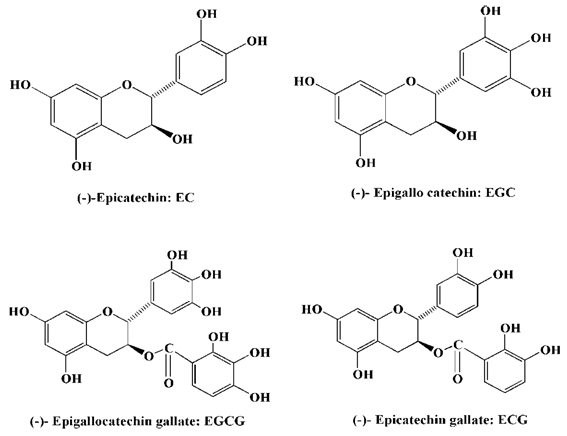
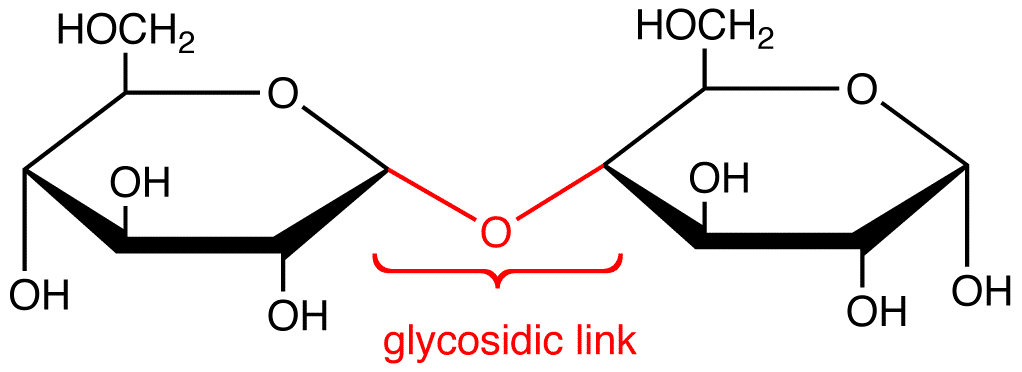
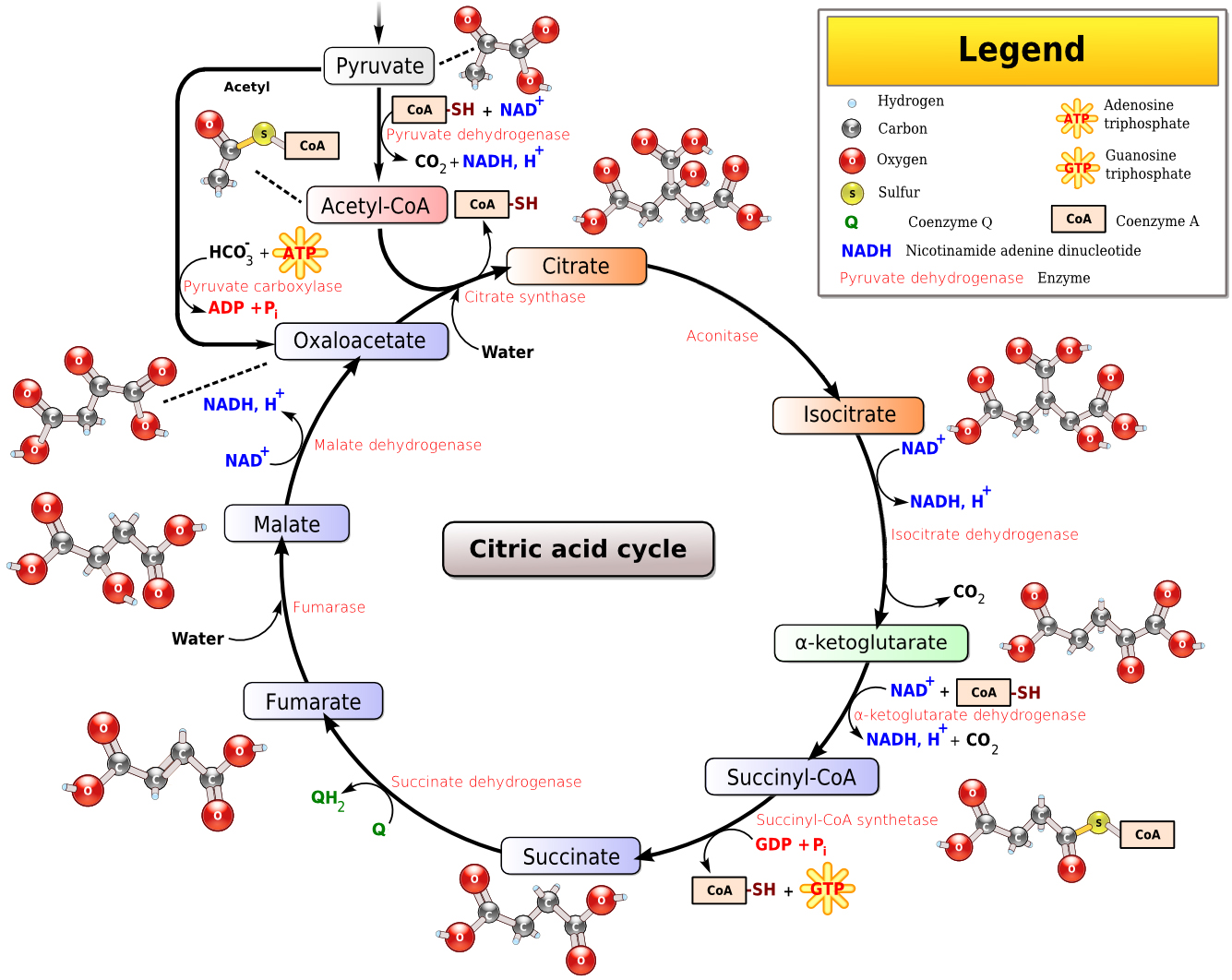


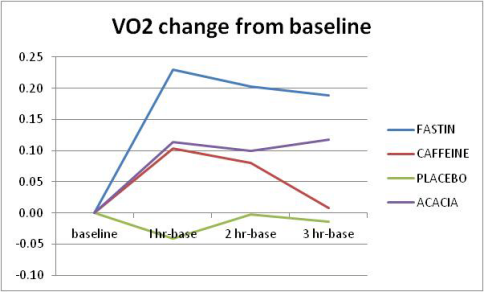


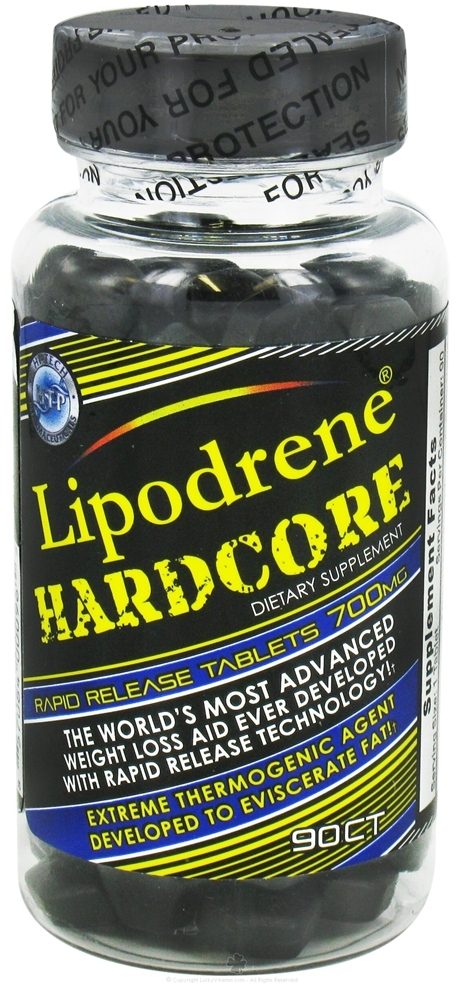
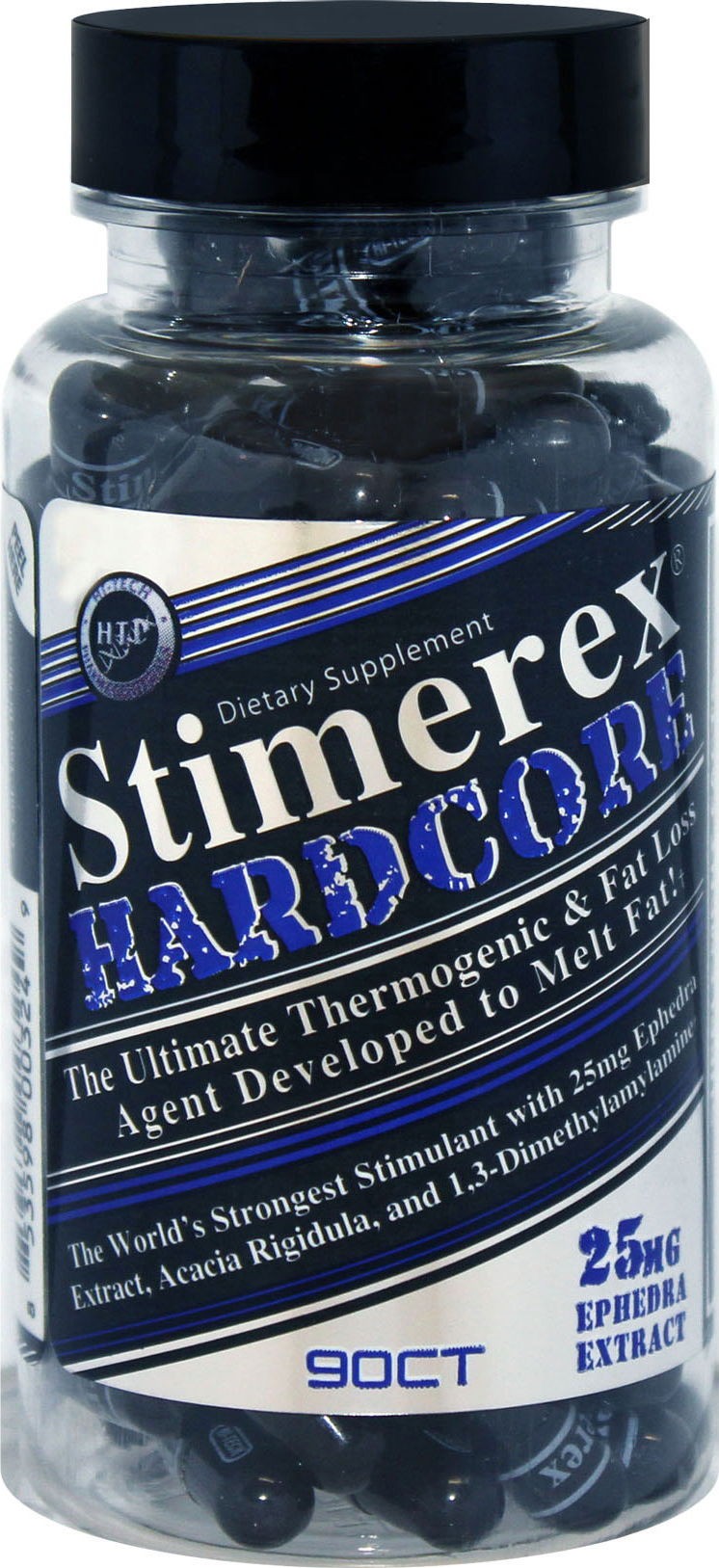
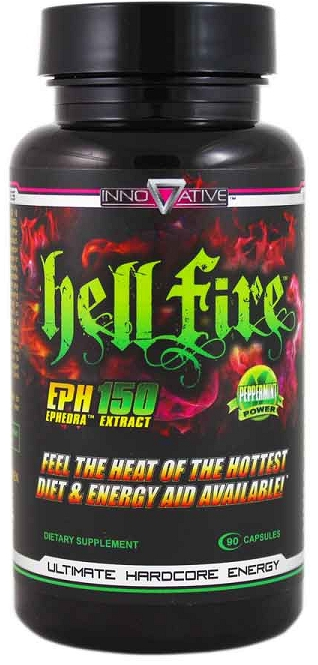
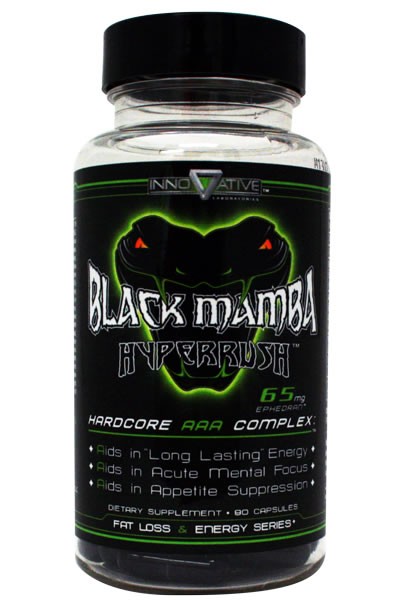




Comments and Discussion (Powered by the PricePlow Forum)